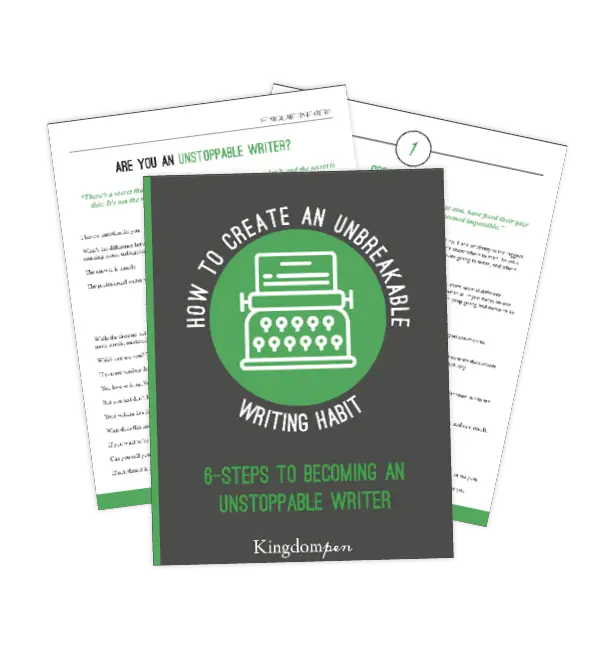By Jodi Clark
You’ve probably heard the term “stakes” floating around in the writing community. Whether you’ve only heard them once or you’ve been hearing about them for a while, understanding what they are is crucial to developing an emotionally gripping story.
Without stakes, you take the heartbeat out of the story. You take out the emotional “why” of the hero, the reasoning behind their goals, the thing that keeps them going when everything is falling apart around them. I would even go so far as to say that if you don’t utilize stakes properly in your stories, you can kill your reader’s interest in your hero and their struggle.
Knowing how important stakes are to your story is the first step to introducing your reader to a plot and cast of characters they will care about. The second step is, of course, applying stakes in your story. Stakes are all about creating questions in the audience’s mind, making the audience wonder if the hero truly will succeed, or if he will suffer the consequences of his failure. Here, I’m going to show you four different types of stakes and how you can use them in your stories to greatly improve your reader’s connection to and interest in your heroes and plot.
1. Raise the Personal Stakes
Example
In Finding Nemo, all Marlin wants is to find his son, Nemo, after Nemo is kidnapped by a human and is later placed in an aquarium just out of reach of the ocean. Marlin cares more deeply about finding his son than anything else, since in addition to valuing his son, Nemo is all Marlin has left of his family after the death of his wife and all his other children.
Source: Giphy
Throughout the story, Marlin is introduced with many obstacles that block his path to finding his son. He has to cross an ocean to get to him and is faced with many dangers that are in the ocean. The stakes are raised ever higher when it seems that Marlin has failed, when Nemo appears to be dead when Marlin discovers him near the aquarium at the dentist’s office.
Eventually, Marlin realizes that Nemo isn’t dead. However, there is one final challenge for the reunited pair to face. They are separated one final time when their friend Dory is caught in a fishing net with hundreds of other fish. Now that Marlin has found Nemo, the last thing Marlin wants to do is let him go into another dangerous situation without him. But Nemo needs to tell all the other fish how to break out of the net, and he’s the only one who can fit through the gaps in the net to get inside.
Marlin has to make the hard choice between letting his son go or keeping his son with him, even though their friend and hundreds of others might die. The personal stakes are high as Marlin chooses to let his son go inside the net and save all the fish, which keeps the audience on the edge of their seat as they watch this tense final obstacle to Marlin and Nemo’s story.
Your Turn
2. Raise the Professional Stakes
Example
In Monsters Inc., Sulley doesn’t want to lose his job. He and Mike Wazowski are a successful scare team, and since Sulley is so terrifying, he is one of the best scarers in the company. One day, his whole life is turned upside down when one of the children enters the monster world and he must deal with the situation.
Source: Giphy
Initially, Sulley doesn’t want anything to do with the child. He thinks she’s poisonous, destructive, and terrifying. But as time goes on, he begins to see that she is just a little kid, and an adorable one at that. He begins to take on a more fatherly role with her as he tries to keep her out of the company’s sight until he and Mike can find a way to take her back through her door.
Unfortunately, Sulley’s growing love for Boo leads him into situations where, if he were discovered to be harboring a human, his professional life would be compromised. Sulley doesn’t want to lose his successful life as a scarer, so his personal goal of keeping Boo safe clashes highly with the professional stakes in this story. The story’s question might read something like this: Will Sulley turn Boo in to keep his job, or will he sacrifice his career and everything he has worked for to keep Boo safe?
Your Turn
3. Raise the Physical Stakes
Example
Physical stakes relate to the question of whether or not someone will be hurt or will die. Pretty much every action movie that has ever existed relies on some form of physical stakes. We’re always left wondering: will the hero succeed, or will they be killed? More stories these days leave all the characters alive in the end (or bring them back to life/reveal that their death was faked), which undermines the effectiveness of physical stakes. If there are no lasting consequences to physical danger and death, the audience will never be worried about any characters, even if the characters are constantly talking about the threat of death.
In Captain America: Civil War, the characters were shown to be capable of being wounded. In their battle at the airport, Vision wounded Rhodey so badly that Rhodey was permanently crippled and could no longer walk without the assistance of Tony Stark’s technology. Captain America and Iron Man fought each other in a brutal confrontation over Bucky’s crimes as the Winter Soldier. This showed the audience the gravity of the situation, that people were getting seriously hurt and the Avengers were truly tearing each other apart.
Source: Giphy
The events of Infinity War (half the population being turned to dust) laid a strong foundation for Endgame. Because the audience knew that it was possible for the Avengers to lose and for people to die, they were riveted by the last chance to stop Thanos, with the constant question “what if the Avengers don’t win?” hanging over their heads.
In Avengers: Infinity War and Endgame, several beloved characters face impossible situations, and instead of being able to pull through and survive like they always have, they pay the ultimate price and meet their ends. Gamora is killed by Thanos so he can take the Soul Stone, Black Widow sacrifices herself so that Hawkeye can retrieve the past Soul Stone, and Iron Man dies from the effects of using the Infinity Gauntlet to reverse everything that Thanos has done and bring back all the people Thanos turned to dust.
The deaths of these beloved characters were all purposefully done—to raise the physical stakes and show the audience that in these last two Avengers films, no character was beyond the reach of death. These deaths were not meant to simply shock the audience. They were meant to show the completion of character arcs, the resolution of a lifetime of struggling to do the right thing. They were meant to reflect on how threatening Thanos was if even the Avengers couldn’t survive his assault on the world.
Your Turn
4. Raise the Global Stakes
Example
Ah, global stakes. At first glance, they can feel like the most devastating and important of all the stakes. In reality, they are the least personal to the character, who does not have a personal attachment to every person in the world nor to the earth itself. Of course, your characters won’t want the world to be destroyed and for thousands of people to be killed. However, at the end of the day, we cry when Peter Parker is turned to dust in Infinity War, not when hundreds of people in the streets vanish and cause all kinds of chaos with their absence.
This is not to say that global stakes are unimportant. It is only to explain that global stakes should be used carefully, and not exclusively, since your readers won’t care much about the fate of the world if there are no characters that they care about within it.
Source: Giphy
Again with the Avengers example, in both Infinity War and Endgame, the fate of half the universe’s population is at stake. All of Earth will suffer if Thanos’s plan takes place. The stakes are global, all-encompassing. But the story does a good job of narrowing in on how the global stakes affect individuals—like I mentioned with my Peter Parker example above—and using those individuals and their small-scale experiences to help the audience understand the large-scale suffering of the entire universe.
In The Lord of the Rings, we are constantly reminded that the Shire will be demolished if Frodo fails to carry out his mission to destroy the Ring. The fate of all Middle Earth actually hangs in the balance, as the audience sees on the other characters’ ends of the story with massive battles taking place at Isengard, Helm’s Deep, Gondor, and the Black Gate. But the heartbeat of the story is the Shire and all its beauty and all the love that the hobbits share for that wonderful place.
Because the Shire matters to Frodo, we can understand what it would feel like if the Shire were to be ripped away from him. Because we can understand what that would feel like, we can get a glimpse into what having the entire world destroyed would feel like.
Your Turn
Conclusion
In conclusion, I hope this has been helpful for you. The next time you’re thinking of raising the stakes in your story, remember that there are four quick ways you can start brainstorming the possibilities:
Thanks for reading through this article! I’d love to know more about what you think regarding this topic.
How do you usually raise the stakes in your stories? What are some high-stakes stories that you enjoy? How are you planning on raising the stakes in your current work in progress?
Jodi Clark
Jodi Clark is a writer and college student from Central Oregon, where she has lived for fifteen years. At college, she is studying for her BA in English along with a minor in history.
She has worked with many authors to revise their manuscripts through her job on Fiverr while working on her own various projects. Aside from writing, her hobbies include hiking, photography, and other outdoors activities.







Awesome!
Thanks, Keilah!
Finding Nemo is one of my mom’s favorite movies! (although she likes its sequel, Finding Dory, even better.)
I haven’t seen many of the Avengers movies, but I did see one or two of the Civil War fight scenes (my dad showed some clips to me). I don’t remember specifically seeing Rhodey and Vision fighting, but I really didn’t know the characters very well at the time so I could’ve missed it.
Love it! I need to raise the stakes in my story rn, so very very helpful!
Thank you, Ella! Stakes are super useful tools, I love raising the stakes in my stories.
This was one of the most helpful things I’ve read! I will definitely be referring to this for all my books!
Yay! That makes me so happy 🙂 thanks for reading this article!
All of these points are so good! My favorite stakes to put in my stories is personal stakes. With personal stakes I just get to know the characters so much better while exploring the theme more. Your questions at the end of each point helped me so much in taking what I want to happen in my story and actually putting into place! Thank you so much!
Thank you so much, Kathleen! I’m glad the questions were helpful to you 🙂 I always tend to fall back on physical stakes, but personal and global stakes are also some of my favorites.